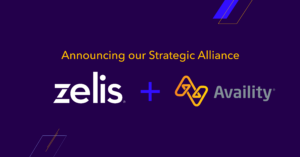Payers face operational pressures on multiple fronts, from rising costs to provider burnout. Those that will succeed in 2024 must embrace digital payments transformation to future-proof their plan and foster provider trust.
Learn More. Watch the Healthcare Payment Trends 2024 webinar. Get the recording here.
Rising financial pressures
Healthcare costs are expected to be 7% higher in 2024 than in 2023, Matthew Albright, chief legislative affairs officer for Zelis, said on a recent webinar. “What we’re seeing is a perfect storm of many different factors creating these rising costs.”
These include:
- Inflation, which hit the healthcare industry late and will linger longer than in other sectors.
- The post-pandemic slump: Even after the pandemic, elective procedure volumes remain below pre-pandemic levels in most areas. For example, claims from primary care doctors are down 13% over the past 5 years.
- New competition from retail clinics in the primary care market and, more recently, in the chronic care market. The use of retail clinics grown 200% over the past 5 years.
- An aging member base as more people age into Medicare versus being covered by higher-paying commercial insurance.
- Labor issues as the industry continues to be challenged by burnout and staffing shortages.
- Legislation, such as the No Surprises Act, that requires changes to procedures and systems.
- Cybersecurity threats: The healthcare industry remains the top target for cybercriminals and fraud attempts.
Aging tech platforms drive costs and stress
These factors are compounded by outdated tech platforms. In every other market and work environment, technology is at the forefront. But this is not the same in the healthcare marketplace, noted Maisie Weir, director of business solutions for Zelis.
Aging technology means less efficient and highly manual processes for everyone involved, and the costs associated with these outdated platforms and processes grow every year. This can lead to frustration, particularly in the areas of payments, communications and claims management.
“Payers want a streamlined and manageable process that supports swift payments and communication models out to their providers, and providers want a clear path to receiving those payments and communications,” Weir said.
Meanwhile, on the consumer side, demands have been pretty consistent for the past 10 years, said Jamie Brocki, VP of customer experience, payments for Zelis. Healthcare consumers want transparent pricing, along with digital communication and payment options. “We’ve seen that 93% of consumers will switch doctors if they have a bad billing experience.”
Provider systems sometimes struggle to get physicians and clinicians on board with new technologies. Many operate in a manual environment where they use a lockbox company to open envelopes, scan checks and log into multiple different health plan portals to investigate payments. “This is a place where digital can come in and really change the game for them,” Brocki said.
Keeping up with compliance
Aging technology also means payers and providers will have a harder time keeping up with new legislation around pricing and data use, as well as regulations that come out in light of new players in the industry.
While the No Surprises Act and transparency regulations were intended to create clarity, they also brought complexity and greater abrasion due to difficult back-end processes and the time a claim can take to make its way through to payment, Weir noted.
Additionally, thanks to new transparency requirements, there will likely be more legislation on healthcare pricing in the near future, Albright said. “We’re also going to see a lot more legislation in the data space because healthcare is going digital, and players like Amazon and Apple are coming into the mix.”
While data security is non-negotiable, it adds complexity for payers and providers.
Building trust with members and providers
Zelis has spent the past year determining providers’ top priorities for their financial processes, said Brocki, noting that the top drivers of satisfaction are solutions that increase efficiency and the speed of payment processing. They also seek solutions that result in fewer billing inaccuracies. Modernized, automated payments solutions address these needs by increasing payment speed, efficiency and flexibility while eliminating manual steps that introduce the opportunity for human error. This can help address staff burnout while making it easier to safeguard data and comply with changing regulations.
Zelis has also looked into top drivers of Net Promoter Scores and found “providers want to see trends related to their payments across multiple payers,” such as whether certain revenue is seasonal or the top reasons for non-payment. Zelis recently rolled out an insights dashboard in its portal, and “these insights help providers optimize their practice and their processes,” Brocki said.
Payers looking to future-proof their payment technologies should offer a streamlined platform with a user-friendly portal that provides payment and practice insights. But updating platforms to align with today’s advances is a heavy lift without the right resources. Organizations with aging tech platforms often try to bridge the gaps using internal teams or the infrastructure already in place, but these efforts can fall short. Weir recommends working with a partner that has solid provider relationships and advanced, secure technological infrastructure that supports all modalities of payments and communications.
Future-proofing payment operations
To future-proof their business in the current healthcare landscape, payers and providers need to get data in the right users’ hands at the right time, for the right reasons, while keeping it safe and secure. This can best be accomplished by working with a trusted partner to implement a one-stop payments platform that simplifies all aspects of payments and communications.
Zelis Advanced Payments Platform (ZAPP) allows plans to efficiently deliver payments and communications to their providers and members, through channels and modes that are aligned to their preferences. Streamline your payments and communications infrastructure with ZAPP today and solidify your business for tomorrow.



